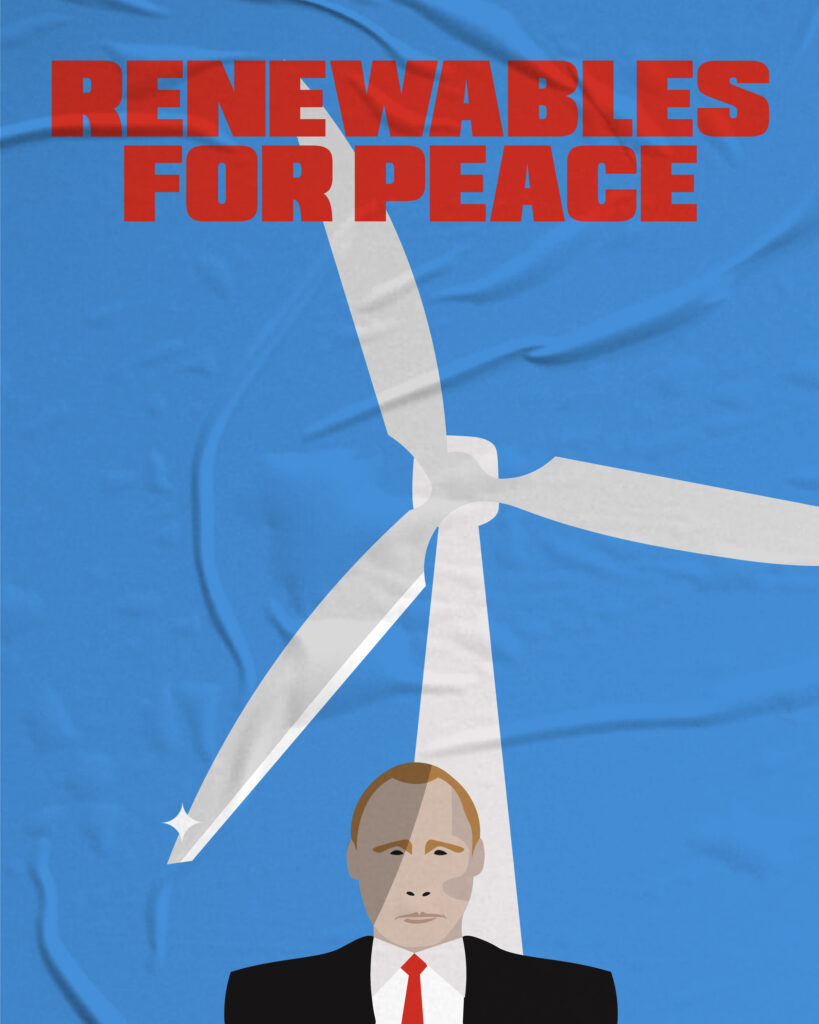At what speed should Europe react?
The war in Ukraine has unified NATO members in their response to Russia’s unjustifiable aggression. Numbers of increasingly stringent sanctions have been adopted against one of the world’s largest countries, and yet somehow the Kremlin seems to navigate this new landscape with a sense of immunity which is quite obviously related to the energy leverage it holds.
A sanction that Europe is finding difficult to introduce is related to Russian gas.
As the war continues, so too do European imports of natural gas from Russia, accounting for almost 40% of Europe’s gas consumption and equating to about 350 million euros a day.
If Europe’s reliance on Russian gas is to diminish then policy must be introduced in a collaborative manner between countries. Could this be a pivotal moment for Europe’s gas reliance on Russia and what needs to happen to bring about change?

‘The question you have to ask is at what speed do you want to do this at?’, says Gerard Reid, a cofounder of Alexa Capital and member of the Global Future Council on Advanced Energy Technologies. He underlines how reducing European consumption will not be an easy task ‘It’s not so easy because we are so interlinked into this Russian economy…’ Therefore, short-, medium- and long-term actions need to be enacted in order to reduce demand for gas while simultaneously decarbonising the energy systems. Taking the 1970s as an example, during the oil crisis, the solutions were to improve energy efficiency and increase nuclear power. Today, with renewables such as solar and wind being posed as cost-effective solutions, attention could be drawn to electrifying heating to curb gas demand. A large collective effort will be required such that policymakers across all countries can electrify heating, accelerate energy efficiency programs for housing and industry and scale up flexible sources of power.
However, it is not purely down to those in charge, the public need to be included in this effort in order to reduce gas demand and hence consumption.
First, and the most obvious solution is simply reducing gas consumption ‘if everyone in Europe turns down their thermostat by 1 °C, we will save 100TWh of gas’. There is a need for greater public knowledge from the government about the situation in order to contextualise the issue. Subsidisation for alternatives is an option but ‘really explaining what is going on’ can lead to a significant decrease in reliance through reduced consumption. This approach could ‘get the people involved in the solution’ leading to a ‘collective war effort’.
The second approach is to increase capacity for renewables such as solar photovoltaics (PV) and wind. Solar and wind farms would need to be developed on the utility-scale and could be sped up by changing the permitting processes before the construction phase. Digitisation of applications as well as stern deadlines for the permitting process could be enforced which could lead to faster growth in the capacity of solar and wind. For micro-generation, grant schemes covering 10-20% for rooftop installations could double the overall investment and work to minimise electricity demand during daylight hours. To deal with demand during dark hours, capacities for bio-energy power plants could be increased. Current issues with bioenergy include the lack of incentives and limitations in sustainable supply. Given that bioenergy offers similar flexibility to that of gas, governments may well look into expediting the development of sustainable solutions utilising bio-energy plants.
For many years the topic of heat pumps has been discussed without a leap for deployment. The slow progress has been associated with the cost of installations; a boiler is cheaper than a heat pump. However, with rising gas prices as a result of limited supply, many households and utilities could become economically obligated to retrofit with new and more efficient technology. Hence the need for ’rewiring Europe’ with accelerated deployment of heat pumps through targeted support for investment allowing for upgrades of homes to maximise energy efficiency and reduce overall costs. The deployment of electrified heating does pose the question of larger power demands. So far, no clear answers exist beyond nuclear power and renewables. However, improving the energy efficiencies of buildings could mitigate the amount of energy required for heating. Policy may be implemented to improve the energy efficiency of buildings, pushing renovations for low energy-efficient buildings through the deployment of standardised upgrades such as retrofitting with improved insulation.
All measures sound great and maybe even doable, but all measures are going to cost, a lot. Adopting green solutions which are simultaneously reliable will not be cheap.
As well as this are the ‘decisions with unintended consequences…the faster it is the more problems which could occur’ says Mr. Reid. If Europe really wants to get off Russian gas out it will have to ‘drive gas generation out of the power mix it means that Germany will need help to keep its nuclear on and France will need help to get its nuclear plants back on’.
So far, Europe wants to impose, through legislation, companies to fill storage up to 90% by early October. This would mean that during the summer, gas imports would have to increase by 40 % relative to that of the previous summer, adding another 40% in demand relative to last summer. This poses a contradiction in that reliance wants to be cut while increasing demand. However, a recent European report announced projected reductions in Russian imports of about two-thirds and has put measures in to replace the shortfall of supply from Russia with liquefied natural gas (LNG). These solutions have been well known for a long period of time. Now could be the time to implement these solutions at the right pace while simultaneously avoiding an economic crisis.
